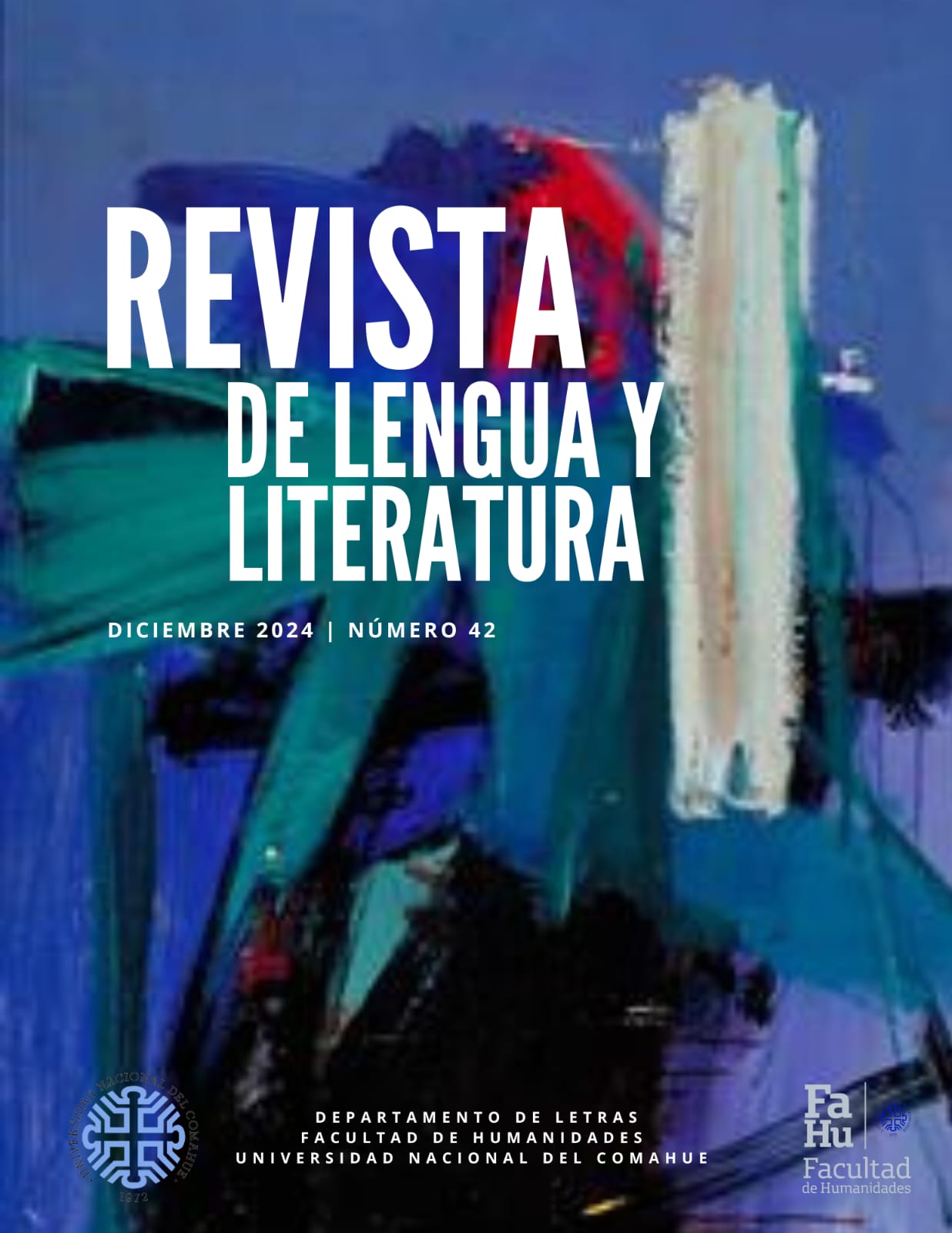Sensuality, desire and perversion in “The bloody chamber” by Carter and Barbe bleue by Nothomb
Keywords:
Fairy tale, Female identity, Bluebeard, Angela Carter, Amélie NothombAbstract
The present work proposes a comparative reading of the short story “The Bloody Chamber” (1988) by Angela Carter and the novel Barbe bleue (2014) by Amélie Nothomb, with the aim of analyzing the rewriting operation both authors perform, using Charles Perrault’s famous tale “Bluebeard” as the hypotext. Both Carter and Nothomb revisit a genre traditionally considered minor, the fairy tale, and offer a subversive and innovative perspective, particularly concerning the construction of female subjectivity. This is a deconstructive gesture that characterizes various contemporary women writers who, as critics have pointed out, have delved into the problematization of generic models inherent in traditional narratives (Juliano, 1992; Secreto, 2013; Bacchilega, 1997 and 2013). In this regard, we believe that, through their protagonists, both versions challenge gender stereotypes while allowing a deeper exploration of aspects related to female desire, inseparable from self-discovery, perversity, and even the death drive. Even though both works exhibit an exaggerated sensuality and a decadent atmosphere imbued with irony, “The Bloody Chamber” stands out for its questioning of all forms of binarism and the enjoyment of sadistic sexuality (Piña, 2012), whereas Barbe bleue highlights the undermining of the victim’s role and the implications of setting the story in the present day (Locic, 2019).
Downloads
References
Bettelheim, B. (1994). Psicoanálisis de los cuentos de hadas. Barcelona: Crítica.
Bacchilega, C. (1997). Postmodern fairy tales. Gender and narrative strategies. Philadelphia: University of Pennsylvania Press.
Bacchilega, C. (2013). Fairy tales transformed?: Twenty-first-century Adaptations and the Politics. Detroit: Wayne State University Press.
Carrera Suárez, I. (1988). “Los cuentos de hadas de Angela Carter: la difícil descolonización de la mente”. Revista Canaria de Estudios Ingleses, Nº 17, pp. 103-112.
Carter, Angela (1998). The bloody chamber. Londres: Vintage.
Carter, A. (1991). La cámara sangrienta y otros cuentos. Barcelona: Minotauro.
Eliade, M. (1999). “Los mitos y los cuentos de hadas” en Mito y realidad. Barcelona: Kairos, 185-194.
Juliano, D. (1992). El juego de las astucias. Mujer y construcción de modelos sociales alternativos. Madrid: Cuadernos Inacabados.
Held, J. (1981). Los niños y la literatura fantástica. Función y poder de lo imaginario. Barcelona: Paidós.
Locic, S. (2019). “Réinvention de l’héroïne féerique dans le roman Barbe bleue d’Amélie Nothomb”. Thélème. Revista Complutense de Estudios Franceses, 34(2) 2019, pp. 377-392
Mattazzi, I. (2018) “Barbe Bleue entre Charles Perrault et Amélie Nothomb. La réécriture littéraire comme miroir du monde sensible”. Féeries, 15. Recuperado de https://journals.openedition.org/feeries/1449?lang=en .
Nothomb, A. (2012). Barbe bleue. Paris, Albin Michel.
---------------- (2012, 19 de agosto). “Amélie Nothomb: La cause de Barbe-bleue est juste, on a tous le droit au secret”, en Le progrès. Recuperado de https://www.leprogres.fr/france-monde/2012/08/19/la-cause-de-barbe-bleue-est-juste-on-a-tous-le-droit-au-secret
----------------- (2014). Barba Azul. Trad. de Sergi Pàmies. Barcelona: Anagrama.
Perrault, C. (1999). Los cuentos de Perrault. Trad. de Graciela Montes. Buenos Aires: Gramón-Colihue.
Piña, C. (2012). “Angela Carter y la Reescritura del Cuento de Hadas: Transgresión, Hibridación Genérica y Humor”. Gramma, XXIII, 49, pp. 10-27.
Renfroe, C. (2001) “Initiation and disobedience: Liminal experience in Angela Carter’s The bloody chamber”. En Roemer y Bacchilega (eds.), Angela Carter and the Fairy Tale. Detroit: Wayne State University Press.
Secreto, C. (2013). “Caperucita y la reescritura posmoderna: el camino de la anagnórisis”. Cuadernos del CILHA, nro. 19, pp. 67-84.
Segura Tornero, A. (2018). “El ethos enunciativo de los protagonistas de Barbe bleue como desdoblamiento de la ‘posture’ de Amélie Nothomb”. L'ull crític, nro. 21-22, pp. 103-118.
Velázquez Ezquerra, J. I. (2008). “La lucidez de Amélie Nothomb”. C. F. F. Vol.19, pp. 235-265.
Zipes, J. (2014). El irresistible cuento de hadas. Historia cultural y social de un género. México: Fondo de Cultura Económica.
Downloads
Published
How to Cite
Issue
Section
License
Copyright (c) 2024 Revista de Lengua y LiteraturaLa aceptación de colaboraciones por parte de la revista implica la cesión no exclusiva de los derechos patrimoniales de los autores a favor del editor, quien permite la reutilización bajo Licencia Atribución-NoComercial-SinDerivadas 2.5 Argentina (CC BY-NC-ND 2.5 AR)
Usted es libre de:
Compartir — copiar y redistribuir el material en cualquier medio o formato
La licenciante no puede revocar estas libertades en tanto usted siga los términos de la licencia
Bajo los siguientes términos:
Atribución — Usted debe dar crédito de manera adecuada, brindar un enlace a la licencia, e indicar si se han realizado cambios. Puede hacerlo en cualquier forma razonable, pero no de forma tal que sugiera que usted o su uso tienen el apoyo de la licenciante.
NoComercial — Usted no puede hacer uso del material con propósitos comerciales.
SinDerivadas — Si remezcla, transforma o crea a partir
El simple hecho de cambiar el formato nunca genera una obra derivada, no podrá distribuir el material modificado.
No hay restricciones adicionales — No puede aplicar términos legales ni medidas tecnológicas que restrinjan legalmente a otras a hacer cualquier uso permitido por la licencia.





